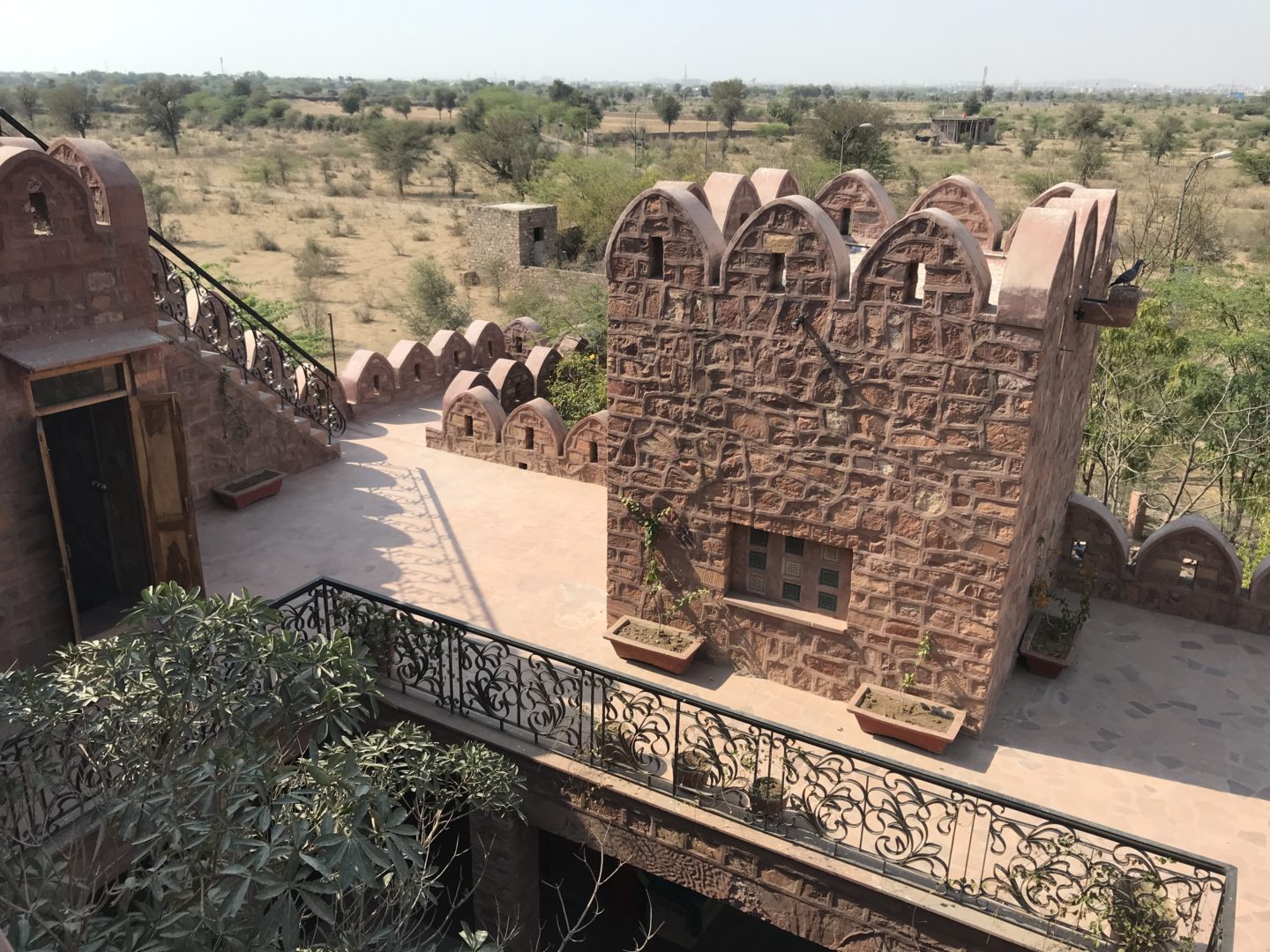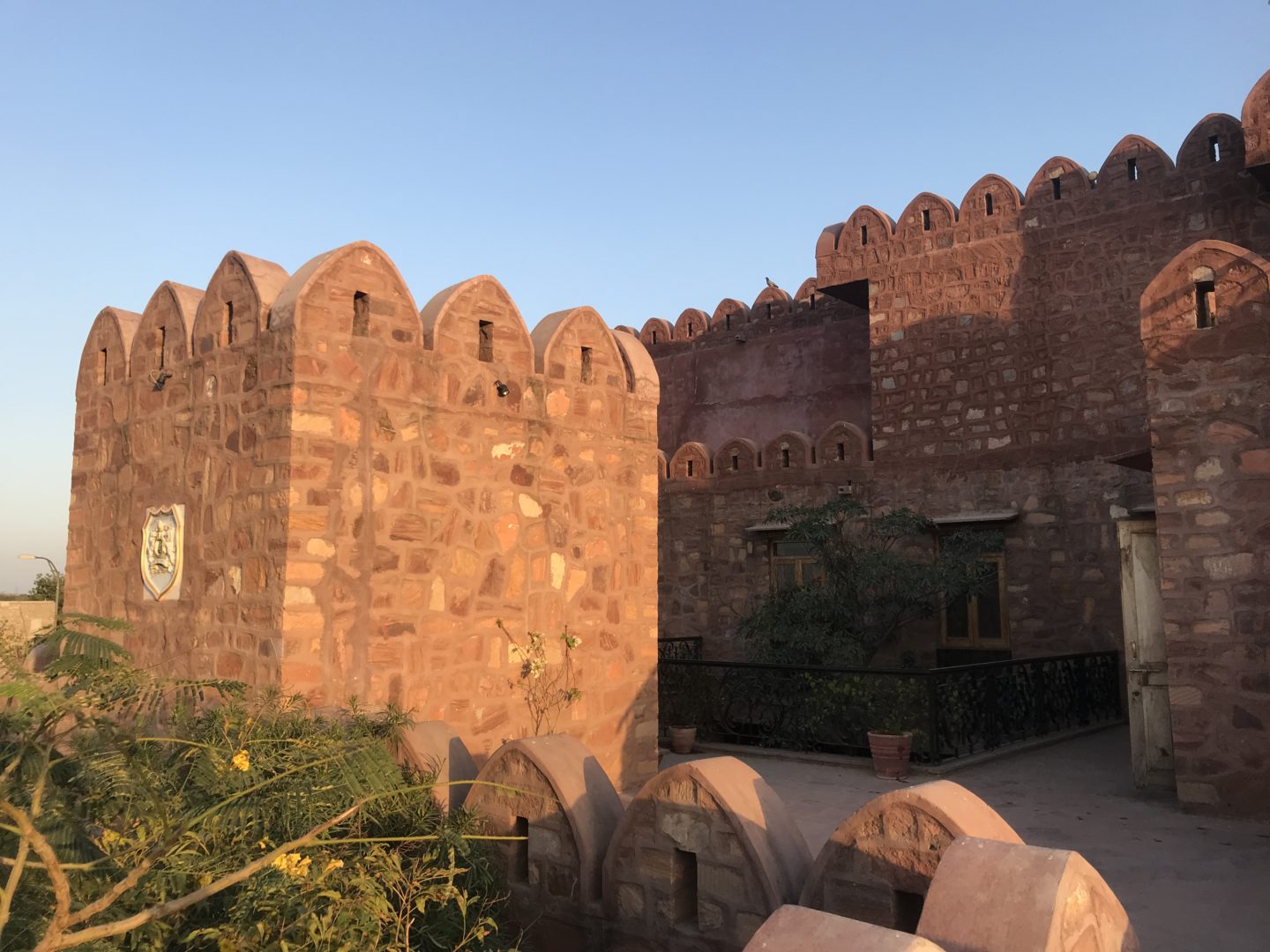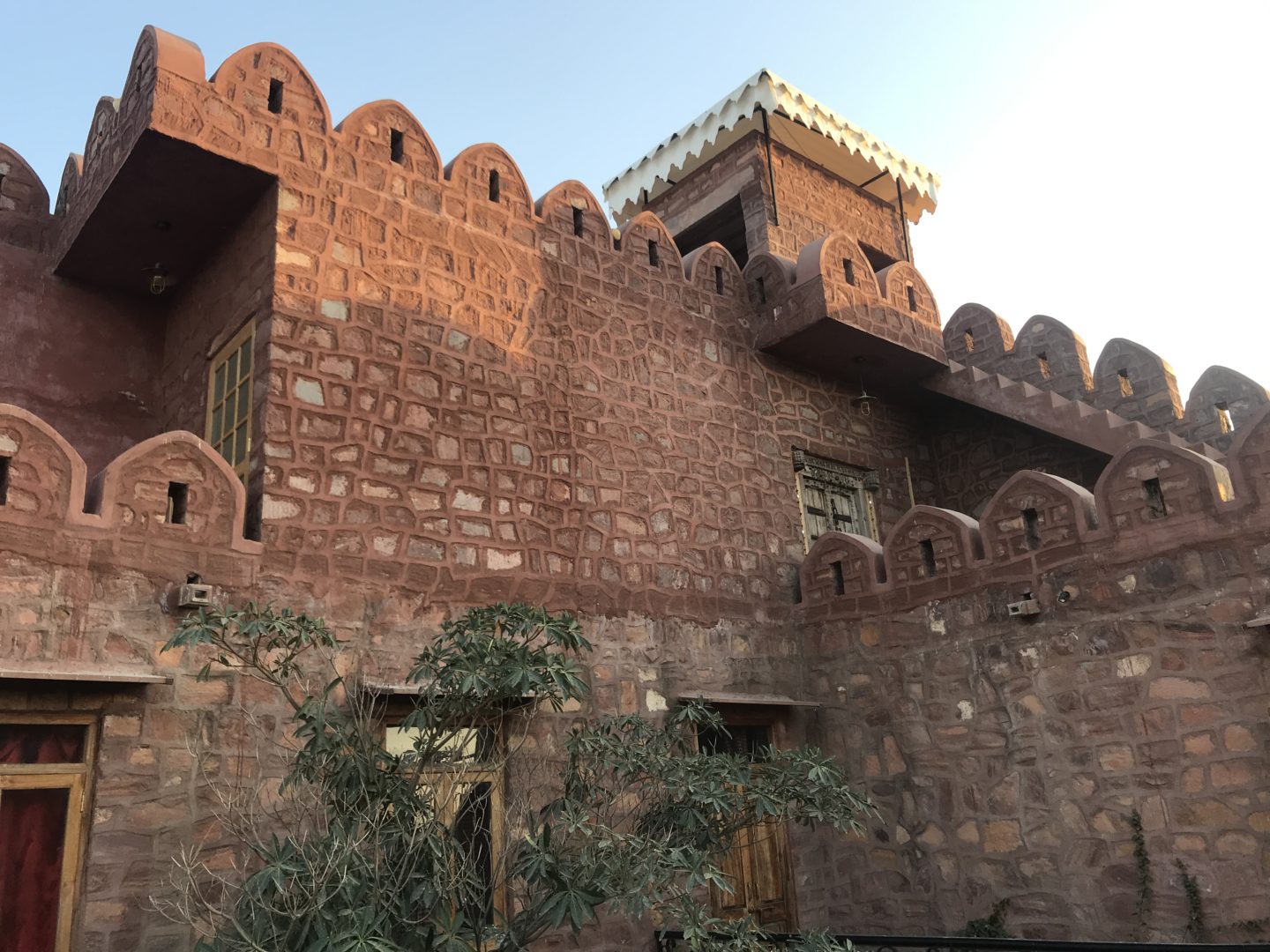In an age when the fashion is to raze heritage buildings to the ground and start afresh, it is fascinating to find a case of the opposite – new structures created to resurrect the grandeur that has long since faded.

Jog Niwas, Jodhpur
Jog Niwas in Jodhpur, a decade-old boutique property, is one such marvel that not many people may know about. It is a treasure trove for a traveler willing to move past standardized, impersonal holidays, wanting to add depth to their travel, and even perhaps wishing to learn more about themselves in the process. If you’re one who looks for an otherwise unattainable insight into the lives of locals and a way to transport yourself to the past through fascinating stories, I can bet that you’ll be thrilled with what you’ll find here.

GETTING THERE
Jog Niwas is located on the outskirts, around 10 km from the city of Jodhpur. If you’re driving, you need to get on NH62 and follow GPS until it leads you to a tiny cut-off that takes you to this homestay in Jodhpur. It is pretty easy to find, and you will see the top portion of its brick façade from the highway itself.

On arriving, I was greeted by the scent of flowers, so strong, that it lingered in the air all throughout my stay. With a welcome tikka applied on my forehead and a shower of petals, I entered through the majestic doorway to Jog Niwas. Affixed on top of the entrance was the Chouhan family court of arms.
ABOUT JOG NIWAS
Jog Niwas, a homestay in Jodhpur, is conceptualized, designed, and decorated by Gajendra Singh Chouhan and Shanane Davis, people committed to the preservation and revival of luxurious, time-intensive courtly arts. Being patrons of art themselves, and storehouses of information on the Royalty of Jodhpur as well as the culture of India, the pair have spent their lives working in collaboration with skilled masters of royal workshops to restore these arts and share their knowledge and beauty of the arts with those who would appreciate it.
Every element at Jog Niwas is put in place with reason. The red stones quarried from the vicinity feature everywhere, from the external façade to the room interiors, lending a fort-like look and feel to the place. Just when you think you’ve been impressed enough, you’ll realize that there’s more to Jog Nwas than what meets the eye. Your stay here will take you back in time to unravel the traditions, history and art from across India.
MY ROOM
I couldn’t decide which of the two bedrooms on the ground floor I liked more – the first one was spacious, while the second, a smaller one, had a view of the garden. It was love at first sight when I saw the third bedroom – the one on the first floor – and the biggest of them all! With a view of almost the entire property from above, including the inner courtyard below me and a room that appeared to be in a tower, above, this one was just perfect!
My room was tastefully furnished. A precious stamp collection hung in frames on the wall, including the first stamp to be made in Sri Lanka after the tsunami hit. A stack of books on my bedside table held knowledge of Indian Art, Ancient History and Culture – great bedtime stories for when I laid my head on the pillow after an exciting day. And the washroom was fitted with modern amenities to ensure a comfortable stay.
My bedroom at Jog Niwas opened up to the upstairs terrace, scattered with wrought iron furniture, where I’d sip my morning tea while enjoying the mellow winter sun. From up here, I had a view of a vast desert landscape – including hundreds of species of birds including several peacocks, and animals like Black Buck, Nilgai and deer walking around, just a few meters outside the gate!
THE FOOD
Our meals at this boutique property in Jodhpur comprised of simple, local dishes cooked at the property itself. We ate in the cool inner courtyard, surrounded by corridors and rooms, under the shade of a tree, with birds flitting from branch to branch overhead and the sound of the gurgling fountain beside us. I especially loved the Ghatte ki Sabji, made with tiny gram flour dumplings in a spicy curd gravy. I also relished the Gulkhand Jam (made of rose petal preserves) that we had for breakfast. As the rays of the sun never touch this portion of the property, it is a markedly cooler place to dine.
Whenever we were done eating (or so we thought), we would have yet another spoonful of food served on our plate. This Rajasthani tradition, called ‘Manvar,’ was new to me, and is a way of showing affection by serving guests more food at the end of a meal.
If that wasn’t enough courtesy, our hosts went above and beyond by cooking us a fantastic meal on our second night at the property AND shared the recipes, too! Shanane made a fabulous Irish Potato Salad and Gajendra painstakingly made us his signature dish, White Maas, cooked on coal, in the courtyard. The dishes may have been from different continents and we may have just met them the day before, but during our meal on the upstairs terrace under the stars on that nippy winter night, I felt like I knew them since forever.
LEARN ABOUT CONNOISSEURSHIP
Spending time with Shanane Davis was undoubtedly the highlight of my trip to Jodhpur. Shanane is a 13th-generation connoisseur. I, and in fact, most of us, would think that a connoisseur is someone with in-depth knowledge of a particular field – say, wine or food. Over the course of my interaction with Shanane, I learned that a connoisseur is someone with the knowledge and ability to break down an item and trace the origin of each of its parts. The term itself, ‘Connoisseur,’ comes from the term ‘Connistre,’ meaning ‘to know.’
Shanane has been trained in the discipline since she was 6 years old, through knowledge and skill that has been passed down to her by her family. Every time we spoke, it made me wonder why I never took an interest in history, culture and art – she made me realize how fascinating it was.
She is passionate about bringing artisans back to what their original occupations were, be it weaving, painting or other luxury courtly arts. Occupations and products for which demand has stopped as consumers are in favor of branded ‘luxury’ items instead, due to which, fathers saw no point in passing their long-held knowledge down to their sons.
Speaking to Shanane, I felt as if a lifetime wouldn’t be enough to grasp the knowledge she had. But during my 2 days at Jog Niwas, I tried to learn all I could. She gave me an introduction to the world of parfum (or ittars) where I understood the difference between base, mid, and top notes (parfum only has mid and base notes, no top notes). I learned how parfum has to match one’s chemistry and when you find one that matches yours, it can last for hours on your skin; I learned how essential oils are mixed with carrier oils to dilute it, making it more affordable. Damascus Rose Oil, for example, requires 3 lakh roses to produce 10 grams of oil. Unreal!
And I also learned how Par Homme and Par Femme (words that often feature on perfume bottles, indicating which is for men and which is for women) are marketing gimmicks. Just as gimmicky as perfume salesmen who spray perfume on a piece of paper for you to try – quite pointless, as it smells different on each person’s skin.
After smelling my skin, she even customized a parfum suited to me, while adding traces of various oils, making it smell better and better with each application. PS. The final product smelled DIVINE (and it contained the special Damascus Rose oil!)
By the way, did you know that there’s a difference between ‘Premium’ and ‘Luxury?’
“The difference,” says Shanane, “is education.” It doesn’t matter what something costs, it matters what it’s worth. For example, diamonds are common precious stones, there are far more expensive, rarer gems. Only an educated person would know that while diamonds are expensive, they aren’t a luxury.
Shanane also took me on a tour of her salons at Jog Niwas, where artifacts she made were displayed using the materials and methods used as they were, centuries ago. As she held up each item, Shanane told me where it originated, who was the first one to commission it, misconceptions, and even the year in which it originated.
The fact that this person sitting in front of me not only knew things that aren’t in history books, but could make them using her own two hands, left me in awe the entire time. From jewelry to paper mache and gem-cut bowls to leather shoes and even statues, it was an eye-opening experience and one that has roused my curiosity in this fascinating field.
There are less than 100 connoisseurs in the world today, and Shanane Davis is imparting her knowledge to those who would love to learn the fundamentals in terms of fine and decorative art, parfum, statuary, and gemology. This course will happen in June 2019 at Jog Niwas. Here’s your chance to learn art forms that have almost died and been forgotten. You can find details on her website.
SO I’M SAYING
During the 2 days I spent at Jog Niwas, I didn’t step out of the door to go and visit the city of Jodhpur – it seemed like such a waste when I could immerse myself in so much history, and culture and have fabulous company here, in this property! I could write a book on my 2-day stay at Jog Niwas, I really could! My stay was incredibly enriching and it is an experience I will never forget. I haven’t even talked about the wildlife safari on foot that we undertook just outside the property with Shanane, and my blog post is already way over the limit. I’ll save that for my next post on Things to Do in Jodhpur.
Gajendra, Shanane, and their wonderful staff made me feel at home in Jodhpur, so much so, that I didn’t want to leave. Book your stay on their website or via Airbnb, and see what I mean.
Until next time!